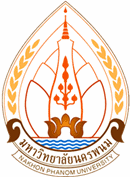Nursing care of pediatric dengue fever patients with co-morbidities : Two case studies
การพยาบาลผู้ป่วยเด็กโรคไข้เลือดออกที่มีโรคร่วม : กรณีศึกษา 2 ราย
Keywords:
Nursing, dengue feverAbstract
Dengue fever is considered an important public health problem for countries in the humid tropics. There is an outbreak in the rainy season where Aedes mosquitoes are the vectors for disease caused by the dengue virus, which has symptoms and severity from mild to shock resulting in the patient's death. This case study was a comparative study of two pediatric patients with dengue fever who had co-morbidities and admitted for treatment at Pediatric Ward 3, Sakon Nakhon Hospital, Sakon Nakhon, Thailand. The analysis of the case studies compared the illness information, Gordon's Health Assessment, defined the nursing diagnosis, and distribution planning
Results: Patient 1 was a child with dengue fever and G6PD. The second patient was a child with dengue fever who had thalassemia congenital disease. It was found that the two cases were different in the following issues: 1) The personal factors at risk for disease, included age and congenital diseases, 2) signs and symptoms, 3) complications during care, and 4) treatment guidelines. There were also different issues, including 1) disease diagnosis, 2) nursing care at various stages, and 3) important nursing diagnosis problems during the fever, crisis, recuperation, and planning for discharge to return home.
Summary of the study results caring for patients with dengue fever required working together as a team of doctors, nurses, patients, and relatives. The nursing team was the personnel who provided close care for the patient 24 hours a day, played an important role in screening, evaluating, and monitoring and observing how the symptoms changed into different stages, so that the patients could receive medical treatment in a timely manner safe from complications, relieve disturbing symptoms to support the minds of the patients and relatives who had fear and anxiety according to the stage of the disease. Comprehensive nursing care was provided according to the problems that occurred at all stages. Furthremore, timely correction allowed the patient to be safely discharged home.
References
กรมการแพทย์ กระทรวงสาธารณสุข. แนวทางการวินิจฉัยและการดูแลรักษาผู้ป่วยไข้เลือดออกเดงกี่ในผู้ใหญ่. ครั้งที่ 1. กรุงเทพฯ: 2563.
กรมการแพทย์ กระทรวงสาธารณสุข แนวทางการวินิจฉัยและการดูแลรักษาผู้ป่วยไข้เลือดออก
(ฉบับย่อ). ครั้งที่ 1. นนทบุรี: บริษัท บียอนด์ เอ็นเทอร์ไพรซ์จำกัด; 2566.
สำนักงานสาธารณสุขจังหวัดสกลนคร สถานการณ์โรคไข้เลือดออกจังหวัดสกลนคร. [อินเทอร์เน็ต]. 2566[31 กรกฎาคม 2566]. เข้าถึงได้จาก: https://r8way.moph.go.th/r8wayNewadmin/page/upload_file/20230804104317.pdf
ศิริเพ็ญ กัลป์ยาณรุจ. (บรรณาธิการ). การวินิจฉัยและรักษาโรคไข้เลือดออกเดงกี่ฉบับเฉลิมพระเกียรติ 80 พรรษามหาราชินี. ครั้งที่ 3. นนทบุรี: สำนักโรคติดต่อนำโดยแมลง กรมควบคุมโรค กระทรวงสาธารณสุข; 2560.
เพ็ญศรี ระเบียบ (บรรณาธิการ). ทฤษฎีการพยาบาล. กรุงเทพมหานคร: คณะพยาบาลศาสตร์ มหาวิทยาลัยมหิดล, 2531.
สมจิต หนุเจริญกุล. ทฤษฎีการพยาบาลของโอเรม. กรุงเทพฯ: ภาควิชาพยาบาลศาสตร์
คณะแพทย์ศาสตร์ โรงพยาบาลรามาธิบดี มหาวิทยาลัยมหิดล, 2533.
เบญจวรรณ ลิ้มพิพัฒนวงศ์ การพยาบาลผู้ป่วยโรคไข้เลือดออก: กรณีศึกษา. วารสารวิชาการสำนักงานสาธารณสุขจังหวัดมหาสารคาม. 2563; 4: 13-22.
ศิราณี ลือทองจักร การพยาบาลผู้ป่วยเด็กโรคไข้เลือดออกเดงกี่ที่มีภาวะช็อก: กรณีศึกษาโรงพยาบาลกาฬสินธุ์ จังหวัดกาฬสินธุ์. วารสารวิจัยและพัฒนาระบบสุขภาพ. 2563; 13: 241-248.
กฤษดา แสวงดีและคณะ แนวทางการวางแผนจำหน่ายผู้ป่วย. กองการพยาบาล สำนักงานปลัดกระทรวงสาธารณสุข กระทรวงสาธารณสุข: กรุงเทพ: โรงพิมพ์มหาวิทยาลัยธรรมศาสตร์: 2539.




